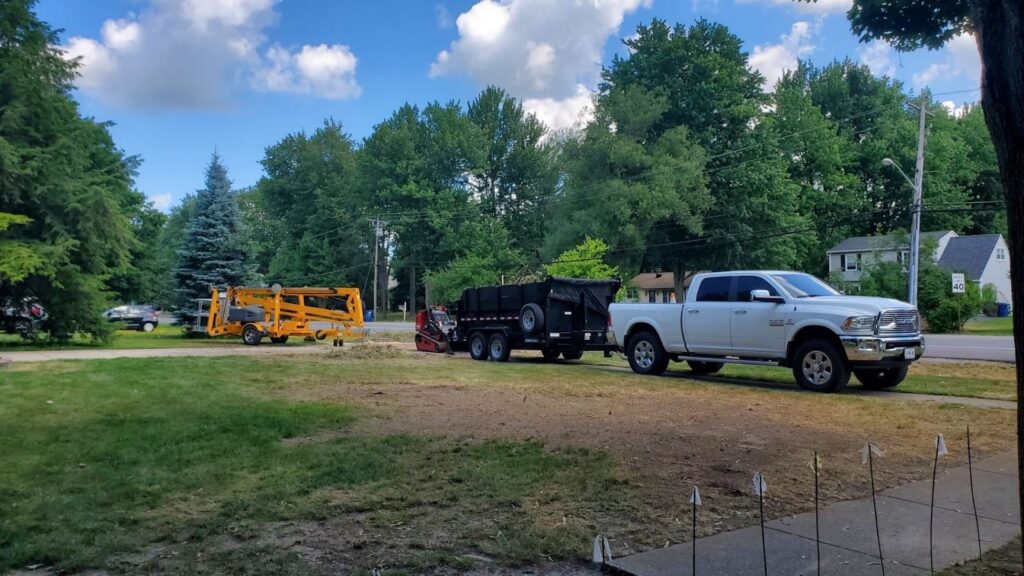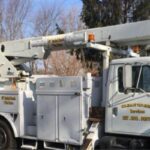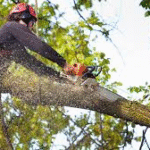You need to remove a tree when it shows structural damage, disease, or poses safety risks to your property. Dead branches, leaning trunks, and root problems signal danger that could lead to property damage or injury. Waiting too long turns a manageable situation into an expensive emergency when storms hit or branches fall unexpectedly.
Read on to learn the warning signs that demand immediate attention and when waiting becomes too risky for your home.
When Does a Tree Become a Safety Hazard?
A tree becomes hazardous when its structural integrity fails or disease spreads beyond treatment. These conditions create immediate risks to people, buildings, and power lines near your property. Recognition of these signs helps you act before accidents happen.
Significant Lean or Sudden Position Change
Trees that develop a noticeable lean over time often have root damage or soil erosion underneath. A sudden change in position after storms means the root system has failed and the tree could topple.
What Degree of Lean Requires Removal?
A lean over 15 degrees from vertical usually means the tree needs removal. Measure from the base to see if the trunk angles toward structures or walkways. Trees leaning over homes or driveways pose the biggest risk. Call a local tree service for professional assessment if you notice any directional changes.
Large Dead Branches Throughout the Canopy
Dead wood becomes brittle and breaks off without warning during wind or ice. Multiple dead branches mean the tree is dying from disease, pests, or root problems affecting the whole system.
How Much Dead Wood Is Too Much for a Tree?
More than 25% dead wood is a warning sign. It means the tree is in decline and may not recover on its own. Dead limbs also increase the risk of branch failure. It’s better to get rid of them.
Visible Trunk Damage or Deep Cracks
Cracks in the trunk weaken the tree’s ability to support its own weight. Vertical splits, missing bark, or cavities let rot and insects get deeper into the wood.
Can Trees Heal from Trunk Damage?
Small wounds can heal over several years. But cracks going through the trunk or wrapping around more than half rarely recover. Deep holes that hollow out the center take away the support the tree needs to stay standing.
Proximity to Power Lines or Structures
Trees growing too close to buildings create problems as they get bigger. Branches scraping roofs damage shingles. Roots can crack foundations and lift driveways over time.
How Close Is Too Close to Buildings?
Most tree species need at least 20 feet from structures to grow safely. Big species like oaks and maples need even more room to prevent future problems. Branches hanging within 10 feet of your roof create fire risks and give pests easy access to your attic.
Root Decay or Fungal Growth at Base
Mushrooms growing around the trunk base mean internal rot spreading through the root system. This decay weakens the foundation anchoring the tree, making it vulnerable to falling during storms.
How to Safely Remove A Tree?
When you are sure to remove a tree, it’s important to remove them safely. Wrong approach can cause various problems. Here are tips for safe removals:
- Hire Expert Professionals: Tree removal needs special equipment and training most homeowners don’t have. A local tree service handles dangerous situations with proper insurance protecting your property from accidents.
- Clear the Area: Move vehicles, outdoor furniture, and anything within falling distance before work starts. Keep children and pets indoors during the entire removal process for their safety.
- Check Local Regulations: Some towns require permits for removing trees over certain sizes or protected species. Fines can hit thousands of dollars if you skip this step and remove regulated trees.
- Plan Debris Disposal: Removed trees create tons of wood and branches that need hauling away. Professionals include cleanup and disposal in their services, saving you multiple dump runs.
- Consider Stump Removal: Leftover stumps attract pests, create tripping hazards, and block new landscaping in that spot. Grinding the stump during the same visit costs less than scheduling it separately later.
<iframe src=”https://www.google.com/maps/embed?pb=!1m14!1m8!1m3!1d50433.21205357008!2d-78.791351!3d43.102209!3m2!1i1024!2i768!4f13.1!3m3!1m2!1s0x89d37b605f7a228f%3A0x21d53ea44f696e7a!2sProza%20Tree%20Service!5e1!3m2!1sen!2sus!4v1761057512424!5m2!1sen!2sus” width=”400″ height=”300″ style=”border:0;” allowfullscreen=”” loading=”lazy” referrerpolicy=”no-referrer-when-downgrade”></iframe>






